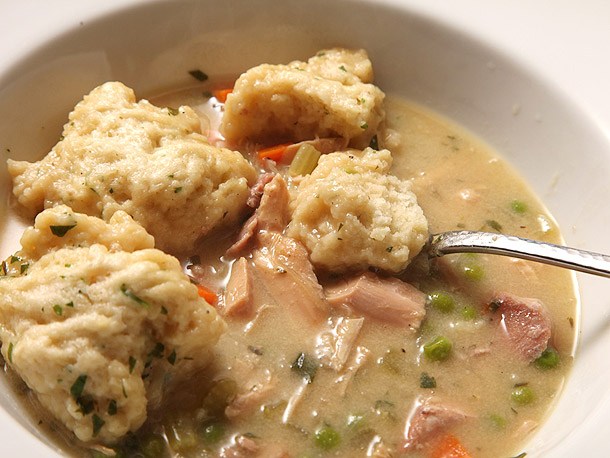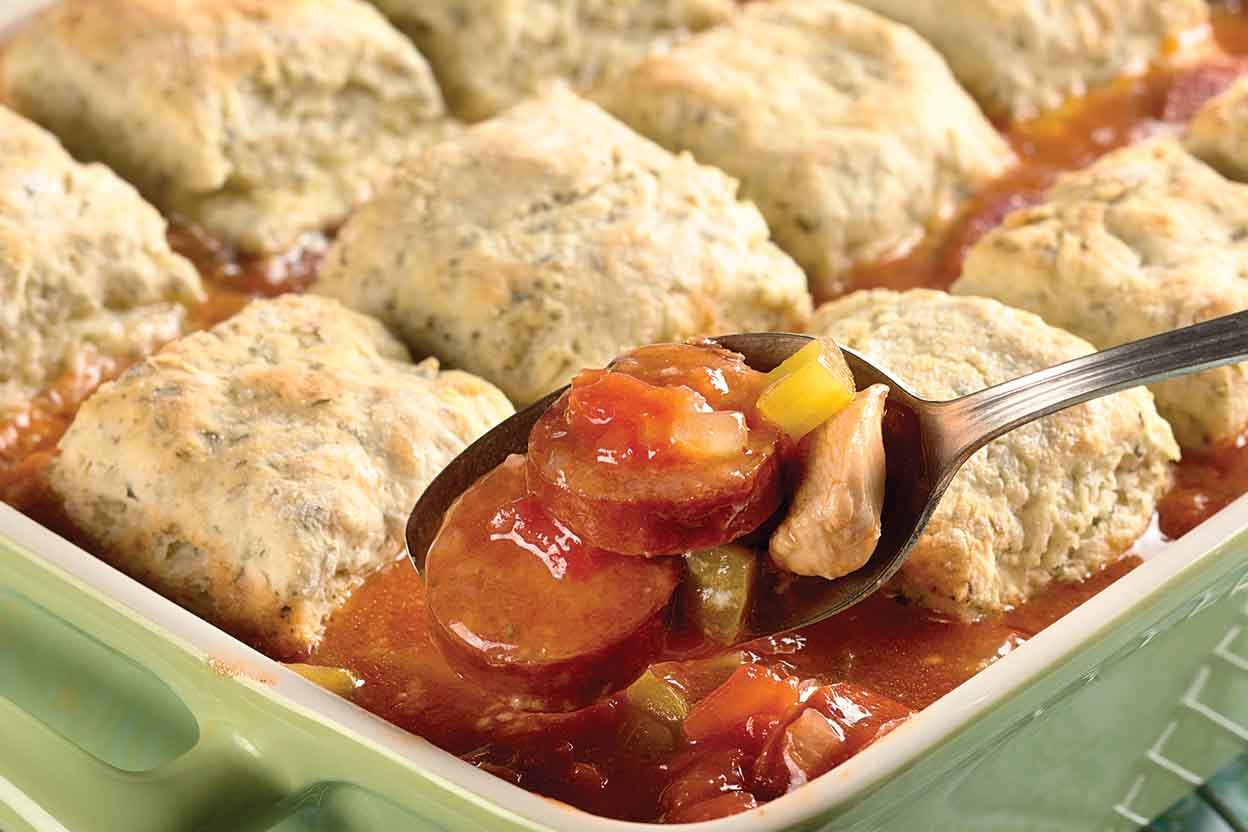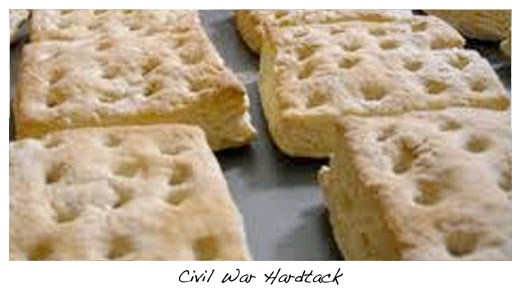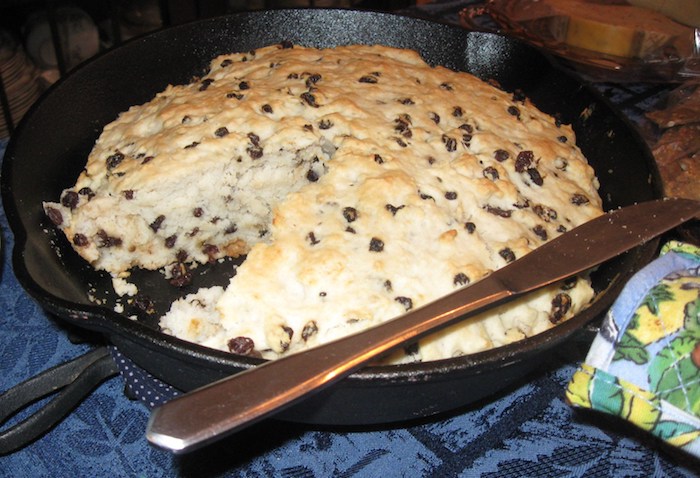
A crisis of any scale is a tough time to either have to learn to do without, or create a lot of work for ourselves. With a little practice and planning, we can still have things that make our next dish of soup or pinto beans or squirrel a little happier, and give us some versatility in how we use flour and mixes for baked goods. We can do it without adding a ton of steps, mess, and in most cases a lot of ingredients to our daily tasks. Whether we’re at home or on the trail, that can save some sanity as well as time and labor.
This is me, so you’re mostly going to see 5 ingredients or less through here, and a focus on cleanup. I’m just not Martha Stewart. But I do like my breads and I do like something sweet now and again, so here’s half a dozen ways we can still get them, even without a working oven or supermarket.
Ash Cakes & Bannock
What would a soup be without some sort of bread? Not as happy, that’s what. Any flour will work for either an ash cake or bannock bread, even purchased mixes like the dinner rolls Augason Farms apparently figures I’ll be making – ever, but especially in a disaster. Even when it’s got extra stuff in there, I go ahead and follow the cup-tablespoon-teaspoon ratio for bannock, or just drizzle in water or milk for an ash cake.
Those ash cakes and bannock can also be augmented by rolled oats, rolled wheat, or instant rolled barley, although you need to let those sit for 10-20 minutes to make sure they have a chance to soak up some liquid, and you’ll probably need to add more liquid than usual. It’s a way to both add some texture and variety to diets, as well as use up some of the cheaper ingredients like oatmeal that are in our storage even when we haven’t planned for no-bake cookies.
Any cornbread or cornmeal can also be turned into ash cakes or pseudo-Johnny cakes, to go beside a soup or under a stew, or to add variety to our breakfast meals.
Drop biscuits & dumplings
Most pancake and dinner roll mixes have the potential to turn into nice, easy biscuits; and anything that’s a biscuit (or bannock bread) can be dropped by mounded tablespoons into a simmering pot of broth, gravy or soup, simmered for 10 minutes, flipped, simmered another 10-12 minutes, and whala – we have a fluffy(ish) bread right there in our soups.
Head’s up: Biscuit dumplings will regularly turn your clear, light broth into something thicker and more gravy like. That is not a bad thing, just a point.
Something that can be a bad thing, is that if you completely cover the top of your soup with dumplings, it gets really hard to stir the bottom.
Both of those factors go away if you opt to make your meal in a solar oven or similar. You can do it one of two ways, just like a regular biscuit bake – stick the biscuits/dumplings on the bottom to slowly rise and fluff, or space them out on top from the get-go or after part of the bake time has elapsed.
An advantage to dumplings over other ways of getting a breading into our soup meal is that it’s still only one cooking pot.
Drop biscuits have advantages in clean-up, too, and in time and waste. When we mix a batter and then spoon biscuits out onto a sheet pan, we don’t even have to dip our fingers in flour for molding them. We sure don’t have to flour a counter and a rolling-pin or drinking glass (which is also what I usually use for a cutter).
When I make drop biscuits, they’re ingredients to oven in 5 minutes or less, and my cleanup involves a bowl and two spoons. When Mr. P makes *real* biscuits, I consider just torching the kitchen and starting over.
In a life with limited water, limited resources, and a lot of labor involved with every aspect of survival, the differences can matter. The same holds true for the drop biscuit dumplings instead of rolling out and cutting even more to make flat drop dumplings.
Hardtack
Hardtack is definitely an option to go with our soups, just like it was in colonial and pioneer days. There are lots of recipes online for baking it.
There are not as many as I’d have expected where people actually eat this stuff, and discover that it’s best soaked for a few hours first, then simmered right along with broth, tea, or soup, anywhere from 10 minutes to an hour depending on the alignment of the stars*.
*Snicker; but not entirely kidding on the predictability front.
That veers it away from a convenience food, but if you’re using a crock pot or equivalent, or are simmering soup for a few hours anyway, heating the house anyway, it’s pretty handy to be able to pop open a bucket of these things 2-5 years after you made them and have a nice, portable, calorie-dense portion to pick up and eat or saw with a fork and knife. We can even sub in some of our crazy flours like ground dry beans, acorn, and barley if we’re so inclined.
Just be aware that real hardtack is not Mountain House pilot bread or a cracker, and that 5-20 minutes under gravy or in a fry pan goes nowhere without a pre-soak once it’s hard and dry.
Beer bread
I am lazy, if it was not obvious from the articles about bed sheets, laundry, and gardening. I’m also not big into babysitting food at timed intervals.
Beer bread fits me to a T.
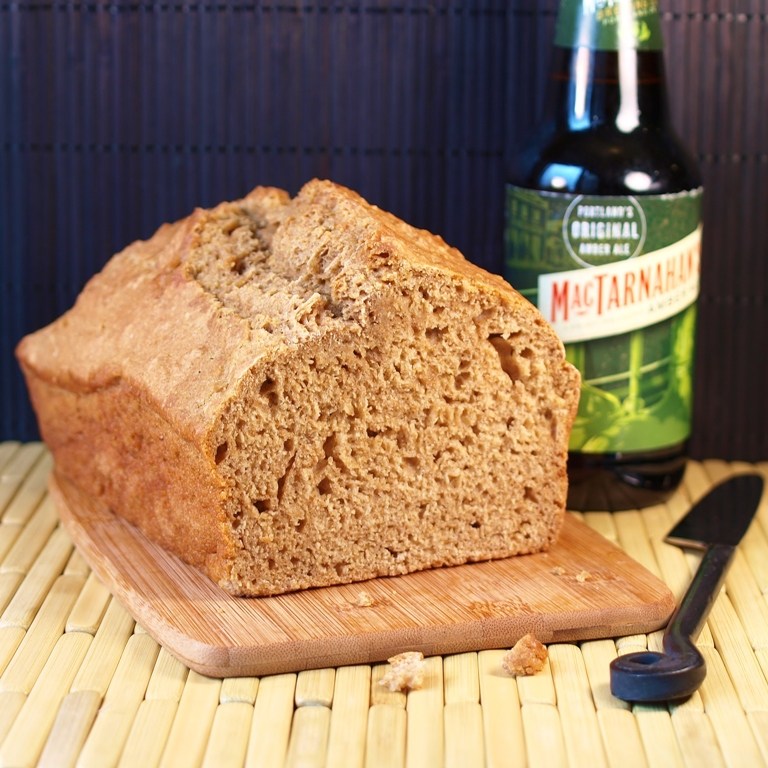
Price out some inexpensive light beer, and don’t neglect the option of a local store ordering a couple flats of forties for you. They’re actually the cheapest option for me, both bottles and cans, because I’m not willing to buy Natty Ice even for a disaster, even though there’s boxed wine in case I decide a wine IV or camelback is necessary for my sanity.
There are many recipes online. I like this one, although I sometimes just omit the butter entirely or use oil instead. This one skips the salt and goes straight to self-rising flour. We can sub in a dinner roll mix or Bisquick for either.
And the sifting … I call it optional.
We can use a beer bread recipe in any kind of cooker, from a crock pot or facsimile to a solar oven. We can make it in little cans around a campfire or rocket stove, too, or atop a clay pot candle heater.
Spread out in a pie plate or frying pan instead of a loaf pan, or separated into muffin pans, it’ll cook faster and be easy to portion out.
That can save arguments over who does or doesn’t get the heels (there are freaks out there who consider that a lesser slice). It can also just make it faster and less messy to serve, while also saving cooking fuel and time.
If you want more flavor to your bread, you can go with heavier and darker ales as you like. While I’m happy sipping a well-built Guinness or Killian’s Red, I don’t actually like them in my bread and that bread is no good for PBJ.
Griddle Cakes
Another cheat I learned for backpacking is that you can make any baked good into a griddle cake. For those of us who want fast and easy in a disaster, or who aren’t *ready* yet and are dying for a quick and easy treat, bag and box mixes I have successfully made into little rounds of goodness with a pan or on the greased top of a canteen mug and any heat source include:
- Oatmeal cookies
- Brownies
- Muffin mixes
- Cake mixes
- Scone mixes
- Cornbread & corn muffin mixes
- Hushpuppy batter
You can follow the directions (or portion them, depending on how easy fresh or powdered eggs and oil are to divide) or cut some of the liquids, and they come out about like puffy pancakes.
Thin them down a fair bit, and, boy oh boy, we’re starting to look into the gourmet side with crepes.
They can be eaten as-is like a soft cookie or roll-up, or topped with powdered sugar, cinnamon sugar, ice cream and milk flavoring syrups, nuts in syrup, honey, tree syrup, Karo, and jelly.
Frosting in a Ziploc bag offers the ability to make cute spirals and grids or fluffy artistic mounds. Pudding can be reserved and mixed thick to do the same, or used as a filling for crepes.
They can also be topped or filled with canned or rehydrated fruits, cannoli filling, pie filling, cream cheese, or peanut butter. You can also play with adding shredded coconut and nuts (and chocolate) to German chocolate frosting, or use sweetened condensed milk and shredded coconut as a super-sweet filler.
Fun note: They can also be baked in a skillet to cut like wedges of cornbread. I regularly bake muffin mixes in a pie pan to create thin little slices that are usually drizzled with something. Tuna cans and soup cans can also be used for any batter, as can small Pyrex bowls or ramekins. Those containers are also all options for baked pancakes, such as this one .
Off-Grid Cooking
Even when we’re not as prepared as we’d like to be, or when we like convenience and we want to continue to have convenient options in a disaster, we can still get the feel-good foods that bread and even “baked” sweet treats can be.
Whether it opens up options for us, just provides some extra backups, or becomes part of our daily habits, keeping an open mind about what we can accomplish – and how much effort it has to take – can only benefit us in the future.
This focused on my weakness: Breads. (And laziness, okay.) I totally endorse knowing how to do and make things from scratch. There are preservatives and cost issues with some of my cheats. However, from things like ash cakes and bannock that truly need few ingredients, to new ways to make and use mixes we might already have around, we don’t want to pigeonhole ourselves, especially if our disaster plans involve holing up in summertime or a lot more physical labor year-round.
Other things to consider when we look at these lists are the amount of fuel some of the treatments take, the amount of pan scrubbing and kitchen cleanup involved, and even the cookware we have at our disposal.
We also might want to look at some of our guilty pleasures when it comes to eating. Even if we don’t stock our cupboards to make it a daily or even weekly staple, we might consider stashing some premade mixes, hiding away some beer, and holding onto some tin cans so we can pop them out now and then for special occasions.


